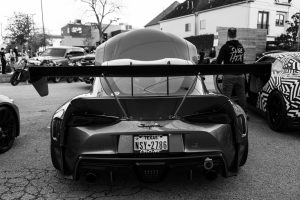Track Titans: Engineering Secrets of 1000+ HP Supercars
When it comes to high-performance supercars, the 1000+ horsepower mark is the ultimate goal for many car enthusiasts. These track titans are the pinnacle of engineering and technology, delivering mind-blowing speed and power. But what exactly goes into creating these beasts on wheels? In this article, we’ll delve into the engineering secrets of 1000+ HP supercars, and how these machines push the boundaries of performance to the limit.
The Rise of 1000+ HP Supercars
Over the past decade, the automotive industry has witnessed a significant increase in the power output of supercars. What used to be an exclusive club of 500-700 horsepower vehicles has now evolved into a league of 1000+ HP beasts. This trend can be attributed to advancements in engineering, technology, and the competitive nature of the industry. With companies constantly striving to outdo each other, the race to create the most powerful supercar has led to the development of cutting-edge technologies and engineering secrets.
Engine Technology
The heart of any supercar is its engine, and when it comes to 1000+ HP beasts, the engine is a work of art. These engines are typically hand-built using only the highest quality components, with every detail meticulously crafted to perfection. Most 1000+ HP supercars utilize a V8 or V12 engine and employ advanced technologies such as forced induction, specifically twin-turbocharging or supercharging, to achieve such high power outputs. This means the engine is able to deliver more air and fuel to the combustion chamber, resulting in higher horsepower.
Lightweight Materials
Weight reduction is another crucial aspect of engineering a 1000+ HP supercar. The lighter the car, the faster it can go, and the more agile it can be. To achieve this, engineers use lightweight materials such as carbon fiber, titanium, and aluminum in the construction of the car’s chassis, body panels, and other components. These materials are not only strong but also significantly lighter than traditional materials, helping to reduce the overall weight of the car without sacrificing strength and rigidity.
Aerodynamics and Downforce
At speeds of over 200 mph, aerodynamics play a significant role in the performance of a supercar. Engineers use advanced computational fluid dynamics (CFD) simulations to fine-tune the aerodynamics of a car, ensuring maximum downforce and minimal drag. This results in improved stability and handling at high speeds, allowing the car to reach its maximum potential without sacrificing control or safety.
Advanced Suspension Systems
Another crucial factor in the performance of 1000+ HP supercars is the suspension system. These cars are equipped with advanced suspension technologies such as active dampers, variable ride height, and adaptive suspension, providing drivers with a perfect balance between comfort and performance. This allows the car to handle corners, bumps, and uneven surfaces with ease while still providing a comfortable driving experience.
The Future of 1000+ HP Supercars
As technology continues to evolve, we can expect to see even more powerful and advanced supercars hitting the market in the future. With the emergence of electric and hybrid powertrains, we may even see 1000+ HP electric supercars becoming a reality. As the automotive industry continues to innovate and push the boundaries of engineering, the future of 1000+ HP supercars looks even more exciting.
In Conclusion
The engineering secrets behind 1000+ HP supercars are a testament to the relentless pursuit of performance and innovation in the automotive industry. These cars are not just mere machines, but works of art that showcase the pinnacle of engineering and technology. From powerful engines to advanced aerodynamics and suspension systems, every component plays a crucial role in achieving the ultimate goal of creating the most powerful and impressive supercars on the planet. With constant advancements in technology, we can only imagine what the future holds for these track titans.











